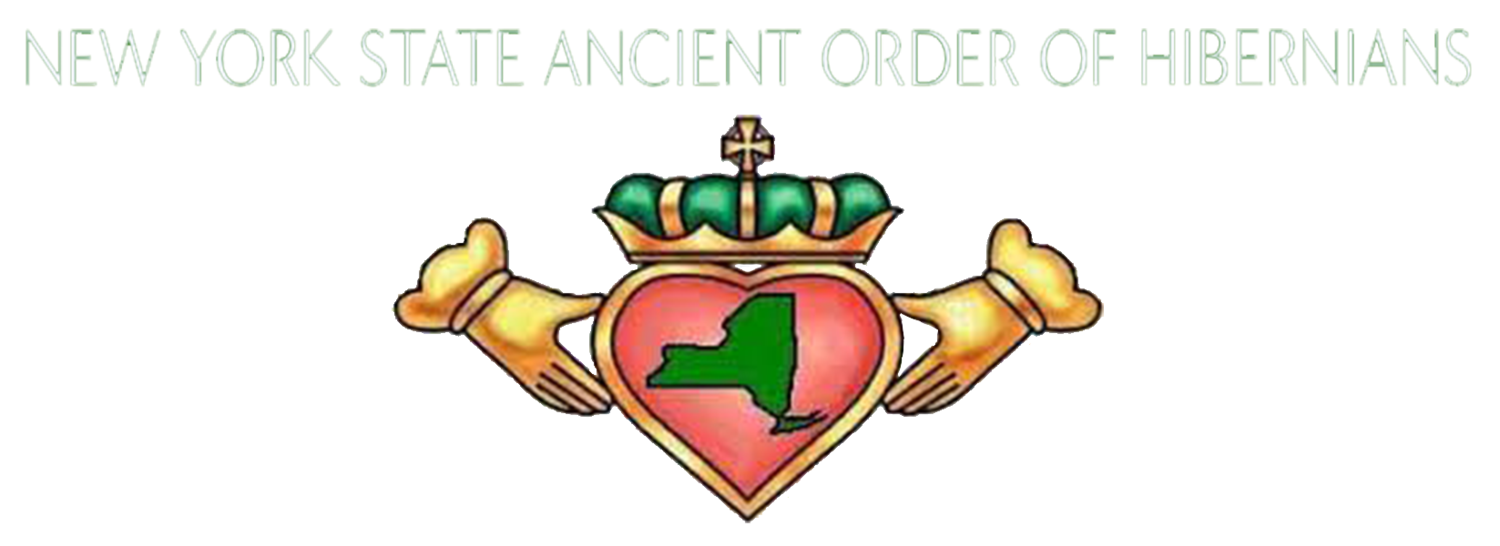Celtic Traditions in Yuletide
By
Michael E. McCarthy
NYS AOH History Council Member, District 2.
Colonel Patrick O’Rorke Division (Rochester)
No other holiday grabs the heart of modern Christians like Christmas. For over two thousand years we have celebrated the birth of Christ in many different and creative ways. Early days were much simpler to reflect the times but with the addition of St. Nicholas, a fourth century Turkish monk and benefactor of the poor, who our ancestors then morphed into Santa Claus children now fantasize about being laden with gifts aplenty on Christmas morning.
The Irish certainly have contributed over the years to the joyous celebrations including leading up to the Holy Day and the celebratory days following. These observances are found in songs like the Twelve Days of Christmas, O Come O Come Emmanuel, also in plays, parades, parties and family gatherings where scheduled and impromptu assemblies of friends and foes alike share the goodwill of gifts and fellowship.
The Irish celebrations are largely rooted in their Celtic heritage. Many have spread into the larger Christian concept of this holiday period. The Celts’ festival celebrations centered around the seasonal weather and crop production. An Geamhrachd meaning cold, stiff and rigid describes the end of the growing season as it moves into Winter Solstice . All things in nature needed to have meaning and purpose and the Druids explained believed the cold refreshed the soil, gave it a cleansing that ensured an abundant and fruitful crop in the upcoming season.
The season was dark and cold and the Celtic spiritual leaders attempted to imbue the season with mystical significance and celebratory significance. An Geamhrachd stretches for three months: December, the twelfth and dark month was known as An Dubhlachd, Am Faoilleach, the Wolf month (January) when the wolves come out of the hills (originating in Scotland) and An Gearran, the gelding and cutting month (February), when cattle were castrated before the flies became active and infected the lesions.
Alexander Carmichael in his Carmina Gadelica described the anticipation of Am Faoilleach in January, “The old people wished to have the furrows filled three times during the Wolf-month – ‘lan uisge, lan sneachda, lan tugha nan taighean’ – full of water, full of snow, full of thatch of the houses.” The Celts invoked the power of three during this dark time in anticipation of successful crop for the upcoming growing season. In turn, Christians used this dark time to look forward with the birth of Jesus for the coming of light in the form of enlightenment.
When early Christian missionaries came to Ireland they used the Celtic beliefs as a pathway to Christian concepts. For example, the Celts, demonstrated by the three months of An Greamhrachd, believed in the power of three. The three stages of life: life, death and rebirth or the three stages of domains: the earth, sea, and sky, and past, present and future. The symbolism of three is steeped throughout the Celtic culture with multiple examples including the triple spiral of the Triskele. It is also believed to represent three Celtic worlds; the spiritual world, the present world and the celestial world. Similarly, they saw life in three states or levels of reality: 1) There is a realm skyward – a hierarchy where deities inhabited the bright sky, and they had hundreds of gods for different purposes, 2) World / Earth – nature, where the trees, flowers grow and human beings – the common people belonged, called elfydd; and 3) the Otherworld or sometimes referred to the underworld – from Dubno meaning very dark, deep, lower dark, like sub terrain life to be feared or shunned. Additionally, the Celts believed in the three musics of enchantment: 1) Suantrai, the music of sleep, 2) Geantrai, the music of joy, and 3) Goiltrai, the music of sadness. We Catholics recognize and cherish our own Trinity, of course: The Father, The Son, and The Holy Spirit.
Caitlin Matthew states in her book Celtic Wisdom, there is a wise three-fold saying that explains the Celtic wisdom “Three candles that illumine every darkness: truth, nature, knowledge. When the thieves of light make free with these three, chaos, confusion, or ignorance result. The darkening of nature betrays the laws of life itself; loss of truth put lies upon our lips; the warping of knowledge makes us strangers to each other. But when we honour these candles they shine within us and make our deeds, words and thoughts honourable again, so that the light returns.” Matthews words also link the essence of Christmas with Christ’s light and candles we lite to honor it.
Although history cannot pinpoint the actual date of Christ’s birth, it seemed fitting to follow the earth’s rotation and the Celtic world view. Thus, after the darkest day of the year – winter solstice, three days later Mary and Joseph arrive in Bethlehem and give birth to baby Jesus bringing longer days, i.e. more light into the world. A plausible story following ancient beliefs and interjecting the birth of the world’s savior.
Through the centuries, the Irish carved their unique niche for holiday festivities. The Celts cherished the mistletoe at Christmas time as it protected them from evil spirits and for its magical and health benefits. Today’s science identifies European Mistletoe extract for cancer treatment and other auto-immune symptoms. However, mistletoe grown in North America does not have the same qualities. The ancient druids also believed it was a potent natural stress and anxiety reliever. Holly and ivy kept evils spirits away, as well, and remain a decorative element of our own Christmas decorations.
The anticipation of the magic and blessings of Christmas has continued through the centuries for many cultures and in different forms but one thing remains constant – Christ’s message of unity and love.
Merry Christmas to all!


